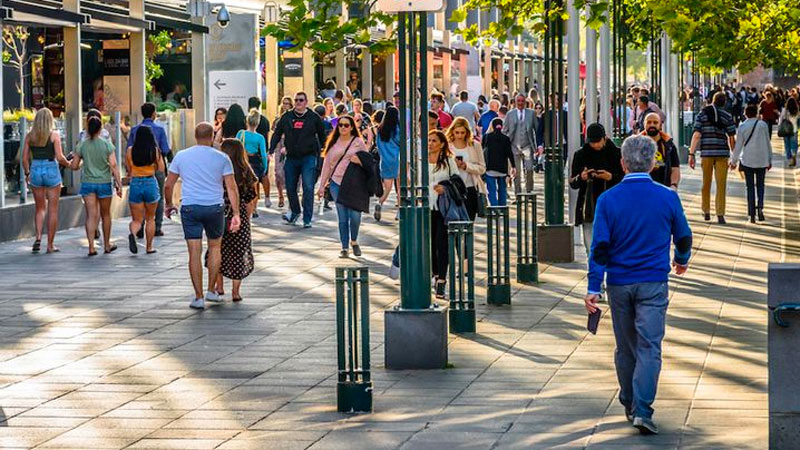The impact of the fall from being one of the world’s most liveable cities to its most locked down during the pandemic is still being felt in Melbourne’s office market.
New research indicates that while office vacancy rates in most CBD markets are edging downwards, the road to recovery is looking a little longer for the Victorian capital.
Despite recording its third successive quarter of positive net absorption in the fourth quarter of 2021, the Melbourne CBD vacancy rate remains elevated at 15 per cent.
The overall vacancy rate was unchanged largely due to a further rise in sublease vacancy.
Office subleasing surged in Australia’s CBDs with the initial onset of Covid in March 2020 as businesses rushed to downsize their footprints while their employees worked remotely, but there are now signs of a reversal or slowing of subleasing space in most other markets.
According to the first Australian Real Estate Quarterly Review for 2022 from Dexus, the Melbourne office market “will take time to recover”.
“The sub-lease vacancy in Melbourne CBD remained elevated at 3.7 per cent, leaving the total vacancy rate unchanged from the previous quarter, as occupier sentiment affected by the underperformance of the Victorian economy after ongoing lockdowns in 2020 and 2021,” the report said.
The data also shows that prime incentives remain high (38 per cent), with net effective rents falling by 7.3 per cent over 2021. Also, prime investment yields stayed flat at 4.8 per cent in the December quarter.
But along with positive net absorption of 12,708sq m in the quarter, the report also noted the city’s office supply pipeline remained solid “with recent completions making it the largest market nationally for the first time”

JLL head of office leasing Tim O’Connor said there had been a turnaround and leasing market sentiment had improved in the Melbourne CBD over the latter half of 2021.
“A number of smaller organisations delayed decision-making over the past 12 months and we expect to see strong activity in the sub 500sq m cohort of the market in 2022,” he said.
JLL’s latest figures show the national office market vacancy rate dipped by 0.4 percentage points to 13.7 per cent in the fourth quarter of 2021 with a positive net absorption of 62,900sq m across the CBD office markets out of the 84,300sq m recorded for the year.
CBD vacancy rates fell in Sydney (to 12.5 per cent), Brisbane (to 15.5 per cent), Adelaide (to 15.6 per cent) and Canberra (to 5.7 per cent). Perth had zero net absorption and its vacancy was unchanged at 19.1 per cent.
“The Australian labour market has proven to be very resilient with business surveys pointing towards robust employment growth over 2022,” JLL headof research Andrew Ballantyne said.
“Historically, employment growth has proven to be a lead indicator for office sector demand.
“While the evolution of working practices will have implications for workplace design, our positive net absorption figures show that a number of organisations are increasing their footprint to accommodate headcount growth.”
Dexus head of research, Peter Studley, said that while the latest Covid outbreak from the Omicron variant was likely to have a short-term impact on confidence “much of the lost economic growth is expected to be recovered over the remainder of 2022”.
“Leasing markets are expected to be helped by positive business conditions, while investment demand and capital flows for real estate are likely to remain supported by low interest rates,” he said.